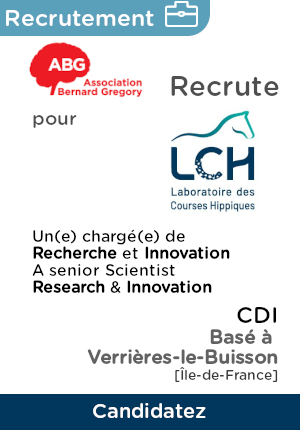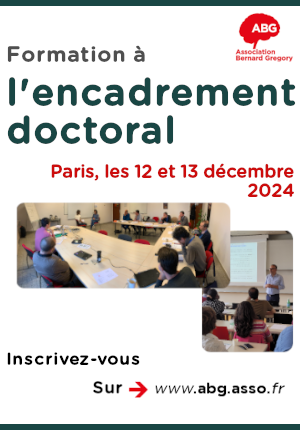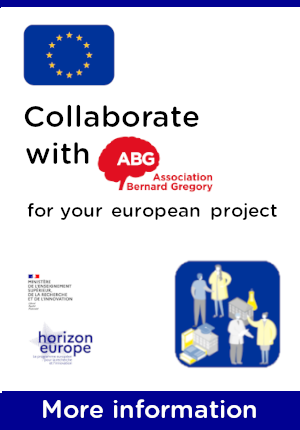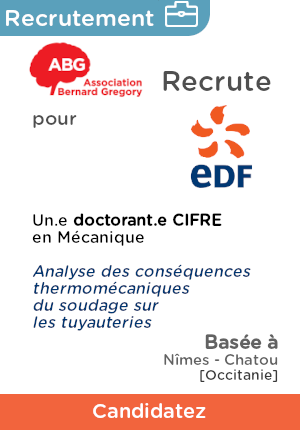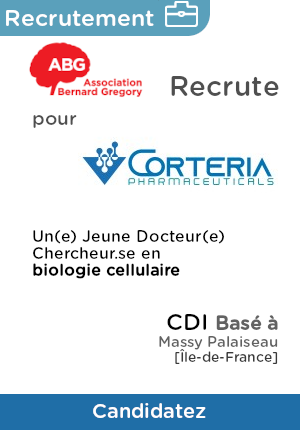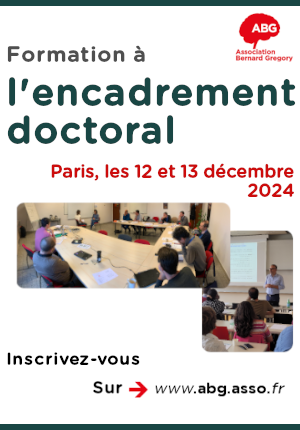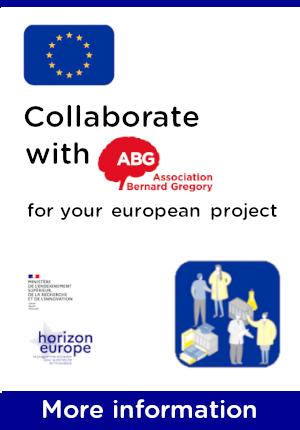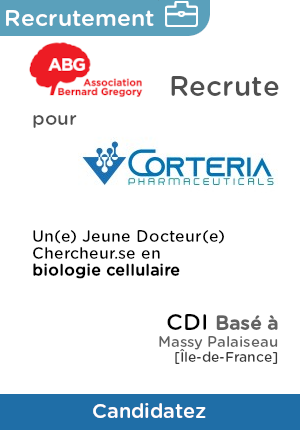NANO-PCM - Étude thermique de matériaux à changement de phase à l’échelle nanométrique
| ABG-124871 | Thesis topic | |
| 2024-07-01 | Public funding alone (i.e. government, region, European, international organization research grant) |
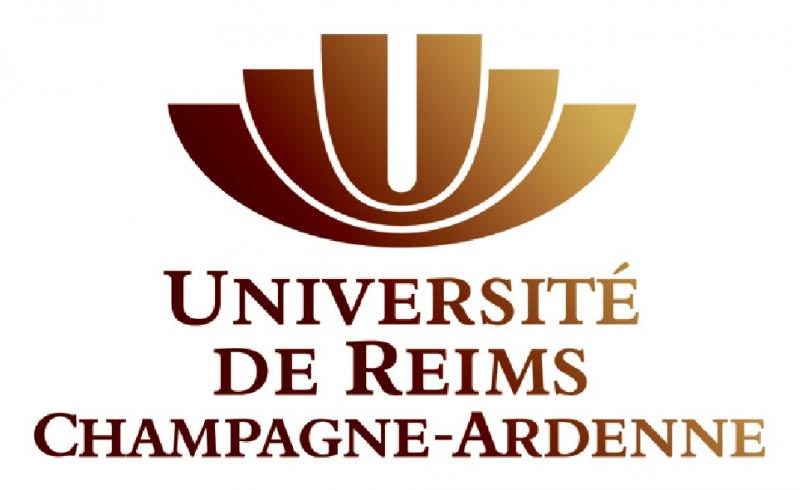
- Physics
- Engineering sciences
Topic description
Le projet Nano-PCM vise à caractériser les propriétés thermiques et les conductances thermiques d’interface de différents matériaux à changement de phase (VO2, Sb2S3 et GST) avec pour objectif des applications en thermotronique et en nanophotonique (circuits intégrés photoniques) dans lesquels les propriétés thermiques sont un élément clé et souvent mal connues.
Les matériaux à changement de phase (PCM) sont actuellement en train de révolutionner la nanophotonique (métasurfaces programmables, neurones reconfigurables [1, 2, 3, 4]) ou d’autres domaines tels les mémoires à changement de phase (phase change memory) [5], les applications d'économie d'énergie (fenêtre intelligente thermochromique) [6] ou le stockage d’énergie [2, 7]. L'utilisation des PCM dans les circuits intégrés photoniques (PIC) visent le développement de commutateurs photoniques non volatils, constituant un pas en avant significatif dans la réalisation de processeurs tout optique [2]. Les applications utilisant ces matériaux se trouvent à l'intersection de la photonique, de la phononique, du génie moléculaire et des technologies électro-thermiques à l’échelle nanométrique.
Parmi les différents PCM, le dioxyde de vanadium (VO2) est un matériau récemment très étudié en raison d’une température de transition de phase proche de la température ambiante (Tc ~ 68°C). C’est un matériau thermochromique avec des applications dans le stockage d'énergie, les applications d'économie d'énergie ou la fabrication d’électrodes pour les batteries et les supercondensateurs. La transition de phase métal-isolant est réversible, présente une hystérésis et se produit sur un intervalle de temps très court (passage d'une structure monoclinique à basse température à une structure tétragonale-rutile à haute température). Lors de la transition, les propriétés électriques, optiques et thermiques du VO2 subissent des variations abruptes, permettant d'envisager plusieurs applications technologiques prometteuses : capteurs thermiques, communtateurs optiques, électriques et thermiques, circuits intégrés photoniques, fenêtres et surfaces intelligentes, traitement de surfaces pour améliorer le confort thermique dans le bâtiment, ou encore la conception et la réalisation de composants thermotroniques (diode, transistor et memristor thermiques). Cependant, la réalisation de tels dispositif passe par la connaissance précise des propriétés thermiques du matériau. De plus, la possibilité de baisser la température de transition du VO2 jusqu’à des températures proches de la température ambiante est une voie de recherche et constitue un point clé pour les applications de la vie courantes (vêtements et fenêtres intelligentes).
Concernant le Sb2S3 et GST, ce sont des PCM permettant d’ajuster et de reconfigurer des fonctionnalités optiques sans aucune pièce mobile. Le rapide réarrangement des atomes à l’échelle nanométrique se traduit par de grandes modifications des propriétés optiques. De nouveaux systèmes exploitent ces propriétés des PCM tels que l’ajustement de l’émission, de la réflexion ou de l’absorption de lumière, les métasurfaces programmables ou les neurones reconfigurables [2], [8]. Outre leurs deux états classiques On/Off, les PCM présentent un autre degré de liberté de réglage : la possibilité d'encoder plusieurs niveaux d’états non volatils via une cristallisation partielle. Plusieurs travaux ont récemment exploité ce potentiel pour des dispositifs de guide d’ondes ou des méta-surfaces. Cependant, la rapidité du processus de cristallisation, de quelques nanosecondes après avoir dépassé le seuil de température est l’un des principaux problèmes. Pour pouvoir mieux contrôler ce processus, la connaissance des propriétés thermiques de ces matériaux est donc cruciale.
De plus, des études récentes sur les matériaux à changement de phase ont montré l’importance des conductances thermiques d’interfaces (TBC) ([9], [10], [11]). Dans ces matériaux, le changement de phase associé au matériau induit une variation des propriétés de l’interface et une transition de la TBC a été montrée. Cependant, les phénomènes thermiques et physiques en jeu lors de la variation de la TBC pendant le changement de phase doivent être mieux compris.
Le projet NANO-PCM vise à améliorer la compréhension du transfert de chaleur dans les PCM, à caractériser leurs propriétés thermiques et notamment les conductances thermiques aux interfaces lors du changement de phase. Dans la mesure où ces propriétés sont mal connues, l’objectif est de fournir des solutions pour optimiser le transfert thermique et donc d’augmenter les performances de composants de thermotronique et de nanophotonique.
Les différents matériaux seront fabriqués par les différents partenaires du projet et les caractérisations thermiques se feront par radiométrie photothermique infrarouge.
Ce projet est financé par moitié par la Graduate School NANO-PHOT (École Universitaire de Recherche, PIA3, contract ANR-18-EURE-0013.
The Nano-PCM project aims to characterize the thermal properties and thermal boundary conductances of different phase change materials (VO2, Sb2S3 and GST) with the aim of applications in thermotronics and nanophotonics (photonic integrated circuits) in which the thermal properties are a key element and often poorly understood.
Phase change materials (PCM) are currently revolutionizing nanophotonics (programmable metasurfaces, reconfigurable neurons [1, 2, 3, 4]) or other fields such as phase change memories [5], energy saving applications (thermochromic smart window) [6] or energy storage [2, 7]. The use of PCMs in photonic integrated circuits (PICs) aims at the development of non-volatile photonic switches, constituting a significant step forward in the realization of all-optical processors [2]. Applications using these materials lie at the intersection of photonics, phononics, molecular engineering and electro-thermal technologies at the nanoscale.
Among the different PCMs, vanadium dioxide (VO2) is a recently widely studied material due to a phase transition temperature close to room temperature (Tc ~ 68°C). It is a thermochromic material with applications in energy storage, energy saving applications or the manufacture of electrodes for batteries and supercapacitors. The metal-insulator phase transition is reversible, exhibits hysteresis and occurs over a very short time interval (transition from a monoclinic structure at low temperature to a tetragonal-rutile structure at high temperature). During the transition, the electrical, optical and thermal properties of VO2 undergo abrupt variations, allowing several promising technological applications to be considered: thermal sensors, optical, electrical and thermal switches, photonic integrated circuits, smart windows and surfaces, surface treatment to improve thermal comfort in buildings, or the design and production of thermotronic components (thermal diode, transistor and memristor). However, the creation of such devices requires precise knowledge of the thermal properties of the material. In addition, the possibility of lowering the transition temperature of VO2 to temperatures close to ambient temperature is an area of research and constitutes a key point for everyday life applications (clothing and smart windows).
Concerning Sb2S3 and GST, these are PCMs allowing to adjust and reconfigure optical functionalities without any moving parts. The rapid rearrangement of atoms at the nanoscale results in large changes in optical properties. New systems exploit these properties of PCMs such as the adjustment of the emission, reflection or absorption of light, programmable metasurfaces or reconfigurable neurons [2], [8]. In addition to their two classic On/Off states, PCMs present another degree of tuning freedom: the ability to encode multiple levels of non-volatile states via partial crystallization. Several works have recently exploited this potential for waveguide devices or meta-surfaces. However, the speed of the crystallization process, within nanoseconds after exceeding the temperature threshold, is one of the main problems. To be able to better control this process, knowledge of the thermal properties of these materials is therefore crucial.
In addition, recent studies on phase change materials have shown the importance of interface thermal conductances (TBC) ([9], [10], [11]). In these materials, the phase change associated with the material induces a variation of the interface properties and a transition of the TBC has been shown. However, the thermal and physical phenomena involved during the variation of the TBC during the phase change need to be better understood.
The NANO-PCM project aims to improve the understanding of heat transfer in PCMs, to characterize their thermal properties and in particular the thermal conductances at the interfaces during the phase change. Since these properties are poorly known, the objective is to provide solutions to optimize heat transfer and therefore increase the performance of thermotronics and nanophotonics components.
The different materials will be manufactured by the different project partners and the thermal characterizations will be carried out by infrared photothermal radiometry.
This work is supported by the Graduate School NANO-PHOT (École Universitaire de Recherche, PIA3, contract ANR-18-EURE-0013.
-
Cueff, S., John, J., Zhang, Z., Parra, J., Sun, J., Orobtchouk, R., ... & Sanchis, P. (2020). VO2 nanophotonics. APL Photonics, 5(11). 10.1063/5.0028093
-
Prabhathan, P., Sreekanth, K. V., Teng, J., Ko, J. H., Yoo, Y. J., Jeong, H. H., ... & Singh, R. (2023). Roadmap for Phase Change Materials in Photonics and Beyond. IScience, 107946. 10.1016/j.isci.2023.107946
-
S. Cueff, A. Taute, A. Bourgade, J. Lumeau, S. Monfray, Q. Song, P. Genevet, B. Devif, X. Letartre, and L. Berguiga, “Reconfigurable Flat Optics with Programmable Reflection Amplitude Using Lithography-Free Phase-Change Material Ultra-Thin Films,” Advanced Optical Materials 9 (2021). 10.1002/adom.202001291
-
E. Mikheeva, C. Kyrou, F. Bentata, S. Khadir, S. Cueff, and P. Genevet, “Space and time modulations of light with metasurfaces: Recent progressand future prospects,” ACS Photonics 9, 1458–1482 (2022). 10.1021/acsphotonics.1c01833
-
Le Gallo, M., & Sebastian, A. (2020). An overview of phase-change memory device physics. Journal of Physics D: Applied Physics, 53(21), 213002. 10.1088/1361-6463/ab7794
-
Liang, S., Xu, F., Li, W., Yang, W., Cheng, S., Yang, H., ... & Jiang, P. (2023). Tunable smart mid infrared thermal control emitter based on phase change material VO2 thin film. Applied Thermal Engineering, 232, 121074. 10.1016/j.applthermaleng.2023.121074
-
Bai, K., Li, C., Xie, B., Zhang, D., Lv, Y., Xiao, J., ... & Chen, J. (2022). Emerging PEG/VO2 dual phase change materials for thermal energy storage. Solar Energy Materials and Solar Cells, 239, 111686. 10.1016/j.solmat.2022.111686
-
Taute, A., Al-Jibouri, S., Laprais, C., Monfray, S., Lumeau, J., Moreau, A., ... & Cueff, S. (2023). A simple method for programming and analyzing multilevel crystallization states in phase-change materials thin film. arXiv preprint arXiv:2306.17631. 10.48550/arXiv.2306.17631
-
Hamaoui, G., Horny, N., Gomez-Heredia, C. L., Ramirez-Rincon, J. A., Ordonez-Miranda, J., Champeaux, C., ... & Chirtoc, M. (2019). Thermophysical characterisation of VO2 thin films hysteresis and its application in thermal rectification. Scientific reports, 9(1), 1-10. 10.1038/s41598-019-45436-0
-
Reifenberg, J. P., Kencke, D. L., & Goodson, K. E. (2008). The impact of thermal boundary resistance in phase-change memory devices. IEEE Electron Device Letters, 29(10), 1112-1114. 10.1109/LED.2008.2003012
-
Kusiak, A., Chassain, C., Canseco, A. M., Ghosh, K., Cyrille, M. C., Serra, A. L., ... & Battaglia, J. L. (2022). Temperature‐Dependent Thermal Conductivity and Interfacial Resistance of Ge‐Rich Ge2Sb2Te5 Films and Multilayers. physica status solidi (RRL)–Rapid Research Letters, 16(4), 2100507. 10.1002/pssr.202100507
Starting date
Funding category
Funding further details
Presentation of host institution and host laboratory
https://ithemm.univ-reims.fr/
Website :
PhD title
Country where you obtained your PhD
Institution awarding doctoral degree
Graduate school
Candidate's profile
Le candidat doit être issu d'une formation M2 ou d'une école d'ingénieur avec une solide formation en physique et si possible en thermique. Des connaissances en science des matériaux et en physique du solide seront également très appréciées. Même s'il n'est pas nécessaire que le candidat soit déjà parfaitement à l’aise dans tous ces domaines, il/elle doit être motivé et intéressé à explorer tous ces aspects en profondeur. Le candidat doit faire preuve d'un bon sens de l'organisation et d'esprit d'équipe, des qualités de rigueur et d’autonomie seront fortement appréciées. Il doit être motivé et dynamique avec de fortes capacités pour le travail expérimental, un bon anglais (écrit et oral) ainsi que de solides compétences rédactionnelles.
Vous avez déjà un compte ?
Nouvel utilisateur ?
Get ABG’s monthly newsletters including news, job offers, grants & fellowships and a selection of relevant events…
Discover our members
 Groupe AFNOR - Association française de normalisation
Groupe AFNOR - Association française de normalisation  PhDOOC
PhDOOC  Ifremer
Ifremer 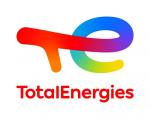 TotalEnergies
TotalEnergies  Nokia Bell Labs France
Nokia Bell Labs France  Institut Sup'biotech de Paris
Institut Sup'biotech de Paris  Généthon
Généthon  CASDEN
CASDEN  MabDesign
MabDesign 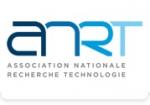 ANRT
ANRT  Laboratoire National de Métrologie et d'Essais - LNE
Laboratoire National de Métrologie et d'Essais - LNE  ADEME
ADEME  MabDesign
MabDesign  ONERA - The French Aerospace Lab
ONERA - The French Aerospace Lab  Tecknowmetrix
Tecknowmetrix  Aérocentre, Pôle d'excellence régional
Aérocentre, Pôle d'excellence régional  SUEZ
SUEZ  Institut de Radioprotection et de Sureté Nucléaire - IRSN - Siège
Institut de Radioprotection et de Sureté Nucléaire - IRSN - Siège  CESI
CESI
-
JobPermanentRef. ABG124941Corteria Pharmaceuticals- Ile-de-France - France

Jeune Docteur, Chercheur en Biologie Cellulaire & Moléculaire (H/F)
BiologyAny -
JobFixed-termRef. ABG125071KTH- Sweden
ERC-funded postdoc position on the detection of gas-phase organic radicals, KTH, Stockholm, Sweden
Chemistry - Physics - Engineering sciencesAny -
JobPermanentRef. ABG123642Laboratoire des Courses Hippiques (GIE LCH)- Ile-de-France - France

Chargé(e) de Recherche et Innovation (H/F) / Senior Scientist Research & Innovation (M/F)
Chemistry - BiochemistryConfirmed

